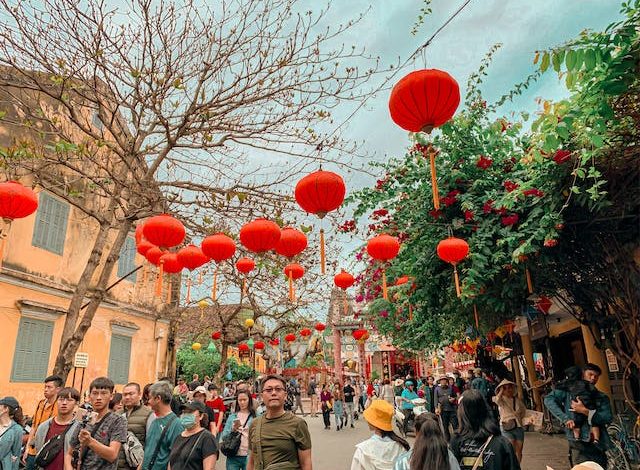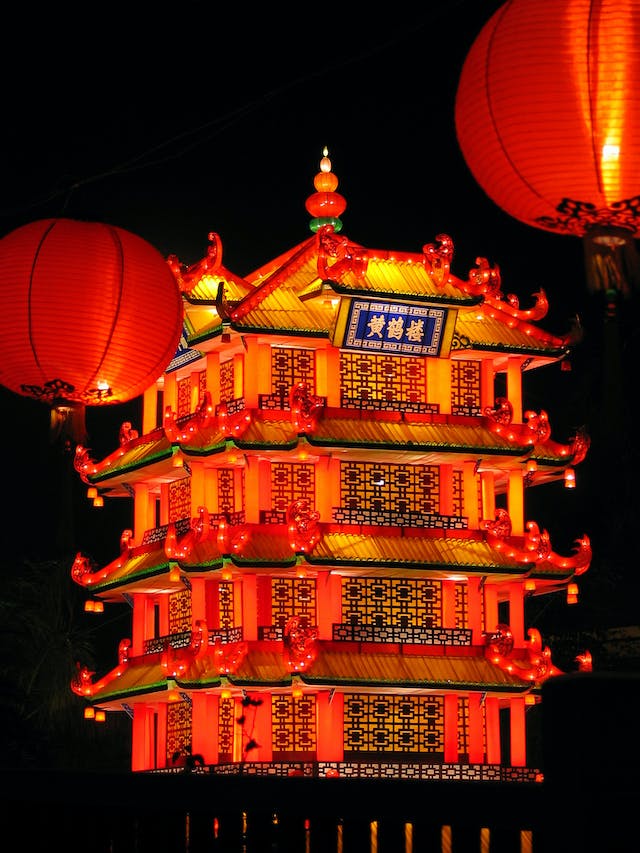
The Chinese New Year, also known as the Lunar New Year or Spring Festival, holds a profound significance as the most revered celebration in Chinese culture, spanning millennia and featuring diverse regional customs across China.
This festive occasion is paramount in China and widely celebrated in South Korea, Vietnam, and areas with significant overseas Chinese populations. While specific holiday dates vary by culture, participants universally view it as a time for familial reunions and renewal.
Central to the New Year celebration is the symbolic act of discarding the old and ushering in the new. Rituals include ancestor worship, dispelling evil spirits, and offering prayers for a prosperous harvest.
Today, the festivities extend beyond China, with vibrant celebrations in Chinese communities worldwide, featuring lion and dragon dances, temple fairs, and flower market shopping.
Preparations for the New Year involve thorough housecleaning, redecorating with red couplets and lanterns, and stocking up on festive foods.
The holiday serves as a significant family reunion occasion, prompting mass migrations known as Chun Yun, as millions travel home to be with their loved ones.
How the Lunar New Year’ The Chinese New Year is Celebrated with the Family
Food and drink play a crucial role in New Year celebrations, with families gathering around the table for a lavish New Year’s Eve dinner, known as Nian Ye Fan.
Ancestral worship is observed through burning incense, while elders give younger family members lucky money, known as Ya Sui Qian, contained in red envelopes, or Hong Bao.
Participants cleanse themselves with a thorough bath to rid themselves of bad luck, donning new clothes and shoes for the festive period.
At midnight on New Year’s Eve, noisy firecrackers signal the arrival of the New Year, while subsequent days see friends exchanging good luck wishes and performing traditional greetings.
How to Say ‘Happy New Year’ in Chinese
In northern China, the greeting “Xinnian Kuaile” (Happy New Year in Mandarin) is commonly used, while in Guangdong and Hong Kong, the Cantonese version, “Gong Hey Fat Choi,” expresses wishes for a prosperous year.
Unlocking the Mysteries of the Lunar New Year
The Lunar New Year, much like its name suggests, commences with the advent of a new moon. Rooted in ancient traditions, this observance traces back to the Xia calendar, which marked the start of the new year on the second new moon after the winter solstice, as detailed by Columbia University.
China honored the Lunar New Year for millennia until 1912 when the government adopted the Gregorian calendar, designating January 1st as New Year’s Day. Nevertheless, the Lunar New Year remains deeply ingrained in Asian culture, evolving into the celebrated “Spring Festival.”
Embracing Timeless Lunar New Year Customs
The Lunar New Year ushers in a tapestry of customs and traditions, fostering cherished moments with family, shopping for festive goods, and exchanging the iconic red envelopes, known as “hóngbāo,” symbolizing good fortune.
Elaborately adorned with gold motifs, these envelopes typically contain money, embodying wishes for prosperity.
Further customs include decorating windows with intricate red paper cuttings and affixing couplets to doors, signifying luck for the coming year.
On Lunar New Year’s Eve, families gather for the poignant “Reunion Dinner,” symbolizing unity and bidding farewell to the old year. Dumplings, a staple of the festive menu, signify wealth and ensure luck in the year ahead.
The practice of house cleaning on New Year’s Eve aims to dispel lingering negativity, although cleaning on the first day of the Lunar New Year is avoided to prevent the unwitting removal of newfound luck.
Fireworks, integral to the celebrations, stem from ancient mythology, where the fiery displays ward off the mythical beast “Nian.”
These explosive displays, accompanied by loud pops, continue throughout the 15-day festivities, with superstitions cautioning against sweeping away the red firecracker wrappers, believed to carry away good fortune.
In essence, the Lunar New Year weaves together ancient rituals and modern celebrations, bridging the past with the present in a vibrant tapestry of tradition and hope.

ALSO READ: Top Bucket-List Destinations in Africa
Unveiling the Legends and Customs of Chinese New Year
Chinese New Year is steeped in captivating stories and myths, each cherished in different corners of the vast country.
One legend recounts a world of ghosts where a majestic peach tree stood atop a mountain, harboring a golden rooster.
This fabled bird’s crow would summon spirits back from their nocturnal escapades.
To ward off evil, two Door Gods stationed at the gate would punish malevolent spirits, inspiring the tradition of displaying protective couplets during the Spring Festival.
Another tale speaks of the fearsome Nian, a mythical beast terrorizing ancient Chinese villages.
When an elderly man claimed to possess the power to repel the creature, he employed firecrackers and vibrant red attire, ultimately driving Nian away.
This legend birthed the tradition of fireworks and adorning homes with red during New Year celebrations.
Lion and Dragon Dances: A Symbol of Fortune
The presence of symbolic creatures like the Dragon, Phoenix, Unicorn, and Dragon Turtle signifies good fortune. To honor these Lucky Mascots, people engage in lively Lion and Dragon dances, believed to usher in prosperity and ward off evil spirits.
Inviting Prosperity with Time-Honored Customs
On New Year’s Eve, families partake in Shou Sui, a tradition involving vigilance through the night. Lighting candles or oil lamps symbolizes the expulsion of negative energies, paving the way for auspicious beginnings.
During Shou Sui, households indulge in various activities, including feasting on delicacies like Nian Gao and Tang-Yuan, engaging in games like mahjong or card games, and relishing moments of camaraderie around the stove.
These enduring tales and customs of Chinese New Year weave a rich tapestry of tradition, instilling hope and joy as communities come together to welcome the dawn of a new lunar cycle.
Exploring the Flavorful Feasts of Chinese New Year
Chinese New Year’s Eve marks a cherished family reunion, highlighted by a lavish banquet, rich with symbolic dishes that signify prosperity and good fortune.
Regional Delicacies: A Culinary Tapestry
In Northern China, “Jiaozi” (dumplings) take center stage, boasting an array of fillings from meats to seafood and vegetables.
Meanwhile, Southern regions, particularly coastal provinces like Guangdong and Fujian, boast a diverse and vibrant culinary landscape.
Fish for Prosperity
A ubiquitous presence on New Year’s Eve tables, fish symbolizes abundance, as the word for “fish” shares a homophone with “plenty.” This tradition, known as “Niannian Youyu,” signifies a wish for wealth in the coming year.
Traditional Treats: Laba Congee and Nian Gao
In Northern regions like Beijing, Laba Congee, a hearty dish of rice, beans, nuts, and dried fruits, evokes a bountiful harvest. Meanwhile, Southern households savor Nian Gao, a sticky rice cake symbolizing growth and prosperity.
Sweet Symbolism: Tang Yuan
Tang Yuan, sweet glutinous rice balls, epitomize family reunion, as the word for “Tang Yuan” sounds similar to “Tuan Yuan,” meaning reunion. Served in soup, it represents familial happiness in the new year.
Global Celebrations: Honoring Tradition Abroad
Chinese communities worldwide celebrate New Year’s festivities, often hosting grand celebrations on the first weekend after the official New Year’s Day. This accommodates those who work during the week and fosters community connections.
Modern Traditions: Travel and Exploration
While traditionally, celebrations lasted until mid-January, modern trends see some opting for travel post-New Year’s Day. Southeast Asian countries are popular destinations, offering a refreshing break to welcome the new lunar cycle.
Chinese New Year is not just a time for feasting but a celebration of tradition, family, and cultural heritage, uniting communities around the globe in a spirit of renewal and prosperity.





